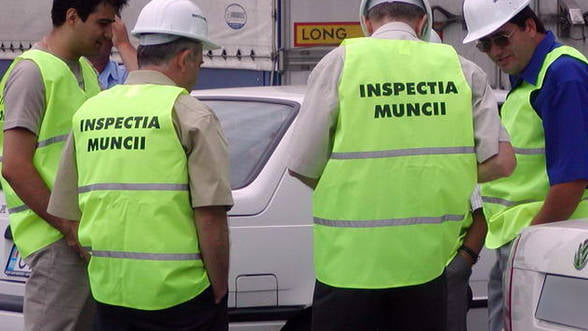Many industries handle various substances that pose risks to human health or the environment. Understanding these risks is necessary to implement effective safety measures in the workplace and during transport. Therefore, it is necessary to know the classification of hazardous substances to ensure proper safety protocols. In this article, we explore the importance of understanding the hazards associated with hazardous substances and examine the purpose and importance of their classification.
What are hazard classes?
Defining the concept of hazard class
Hazard classes are categories used to group hazardous substances or materials on the basis of their common properties and the risks they pose. Each class represents a specific type of hazard, such as flammability, toxicity, corrosivity or reactivity. They serve as a standardised system for classifying and communicating the nature and severity of hazards associated with substances, allowing appropriate precautionary measures to be implemented in different situations.
How many hazard classes are there?
There are several globally recognised hazard classes used in different classification systems, such as the United Nations Globally Harmonised System of Classification and Labelling of Chemicals (GHS). There is also the Agreement concerning the International Carriage of Dangerous Goods by Road (ADR). Both include classes covering explosives, gases, flammable liquids, flammable solids, toxic substances, corrosive substances, oxidising agents and many others. The number of hazard classes can vary slightly depending on the classification system and its specific requirements and criteria.
Exploring hazard classes
Class 1: Explosive materials
Explosive materials are substances that can rapidly release energy in the form of a violent explosion. They are classified according to their sensitivity to ignition and the severity of the explosion. Transport requirements for explosives include strict packaging, labelling and handling procedures to minimise the risk of accidental detonation.
Class 2: Gases
Hazardous gases can be flammable, toxic, asphyxiating or oxidising. Transport requirements for gases involve the use of specialised containers, such as cylinders or tanks, to ensure safe storage and transport. These containers must be properly labelled and handled to prevent leaks or accidents. They must also be adequately ventilated during transport.
Class 3: Flammable liquids
Flammable liquids are substances that have a low flash point and can ignite and burn easily. The list includes gasoline, solvents and certain chemicals. Transport requirements for flammable liquids include the use of approved containers and packaging that can withstand the associated hazards. Of course, during transport they require proper ventilation and the presence of appropriate fire-fighting equipment in case of emergency.
Class 4: Flammable solids, self-reactive substances and solids which, in contact with water, emit flammable gases
This class of hazardous chemicals includes substances that can ignite or react dangerously when exposed to heat, friction, shock or contact with water.
Flammable solids can easily catch fire, while self-reactive substances can undergo a violent reaction without an external ignition source. Substances that emit flammable gases on contact with water may release highly flammable gases or form explosive mixtures.
Transport requirements involve proper packaging and labelling to minimise the risk of ignition or reaction and compliance with substance-specific regulations.
Class 5: Oxidising substances and organic peroxides
Oxidising substances are materials that can release oxygen or other oxidising agents and promote combustion. Organic peroxides, on the other hand, are substances that can decompose rapidly, leading to fire or explosion. Again, special containers and packaging are needed that can withstand their reactivity.
Class 6: Toxic and infectious substances
Toxic and infectious substances can cause injury or illness to living organisms, including humans. The list includes chemicals, biological agents and certain medical waste. During transport, special packaging with appropriate labelling is used to ensure containment and prevent exposure. Protective measures against accidental spills or releases are also implemented.
Class 7: Radioactive materials
Radioactive materials emit ionising radiation, which can pose health risks to living organisms. They are classified on the basis of their level of radioactivity and potential hazards. Transport requirements for radioactive materials are highly regulated and involve specialised packaging, labelling and documentation to ensure the safety of transport personnel and the general public.
Class 8: Corrosive substances
Corrosive substances are materials that can cause damage to living tissue or other materials on contact. They can be acids or bases with high pH levels. These substances must be properly labelled to indicate their corrosive nature. Avoid contact with incompatible materials during storage and transport. Personnel handling corrosive substances should also be trained in safe handling procedures and equipped with appropriate personal protective equipment to minimise the risk of injury.
Class 9: Miscellaneous dangerous substances and articles
This last class covers miscellaneous substances, goods and articles that do not fall into other hazard classes but still pose a risk to human health or the environment. Two examples are dry ice and lithium batteries. These materials require special handling procedures.
Knowing the hazard class of the material is vital for the transport, storage and handling of hazardous substances. Each class has specific requirements, and non-compliance can lead to fines, penalties and other legal problems. You can find out more here about ISCIR verification services to avoid any problems.
Special cases: substances with multiple hazards
Examples of substances with multiple hazards
There are substances that can have multiple hazards associated with them. Some examples include:
Ammonia is a gas that is both toxic and flammable. It can cause respiratory irritation and burns. Ammonia is classified as a toxic gas and a flammable gas.
Nitric acid is a corrosive liquid that is also a strong oxidant. It can cause serious burns and is capable of sustaining combustion. As a result, it is classified as a corrosive substance and an oxidising substance.
Benzene is a flammable and highly toxic liquid. Prolonged exposure to benzene can lead to serious health effects, including cancer. Benzene is classified as both a flammable liquid and a toxic substance.
How are these substances classified?
These substances are classified according to the highest level of hazard they present. This ensures that appropriate precautions are taken during storage, handling and transport to mitigate associated hazards.
How is hazard classification applied in practice?
Hazard classification is applied by assessing the properties and potential risks of substances or materials. This involves classifying them into the specific classes outlined above.
The role in workplace safety
Hazard classification plays a key role in workplace safety by promoting a safe environment. Identifying and classifying hazards correctly allows employers to implement necessary safety protocols, provide employees with adequate training and ensure regulatory compliance. By mitigating potential risks and hazards, hazard classification helps reduce workplace accidents, injuries and illnesses. Use HSE risk assessment services to ensure you are properly enforcing the law and there are no potential hazards within your business.
Impact on the transport of hazardous substances
The classification of hazardous substances plays an important role in the transport of these materials. Here are the most important issues to consider:
- handling and packaging: hazard classification ensures that substances are stored and transported in containers specially designed to withstand their properties, minimising the risk of spills or other accidents
- safety measures: the classification system helps to determine the necessary safety measures and protocols to be followed during transport
- emergency response planning: enables staff to respond effectively to incidents involving hazardous substances
- regulatory compliance: transport operators and companies follow standardised safety protocols and procedures, reducing the risk of incidents
The classification of hazardous substances is an indispensable tool for promoting safety in the workplace. We hope this article has helped you to better understand the associated risks in order to implement appropriate safety measures. In this way, you will protect the health of your employees and prevent possible unpleasant incidents.
Surse:
- “Health and Safety: Hazard Symbols.” European Commission, 2023, ec.europa.eu/taxation_customs/dds2/SAMANCTA/RO/Safety/SymbolsOfHazard_RO.htm. Accessed 24 May 2023.
- “Transport of Dangerous Goods.” Romanian Road Authority, 2021, www.arr.ro/transport_doc_143_transport-marfuri-periculoase_pg_0.htm. Accessed 24 May 2023.



